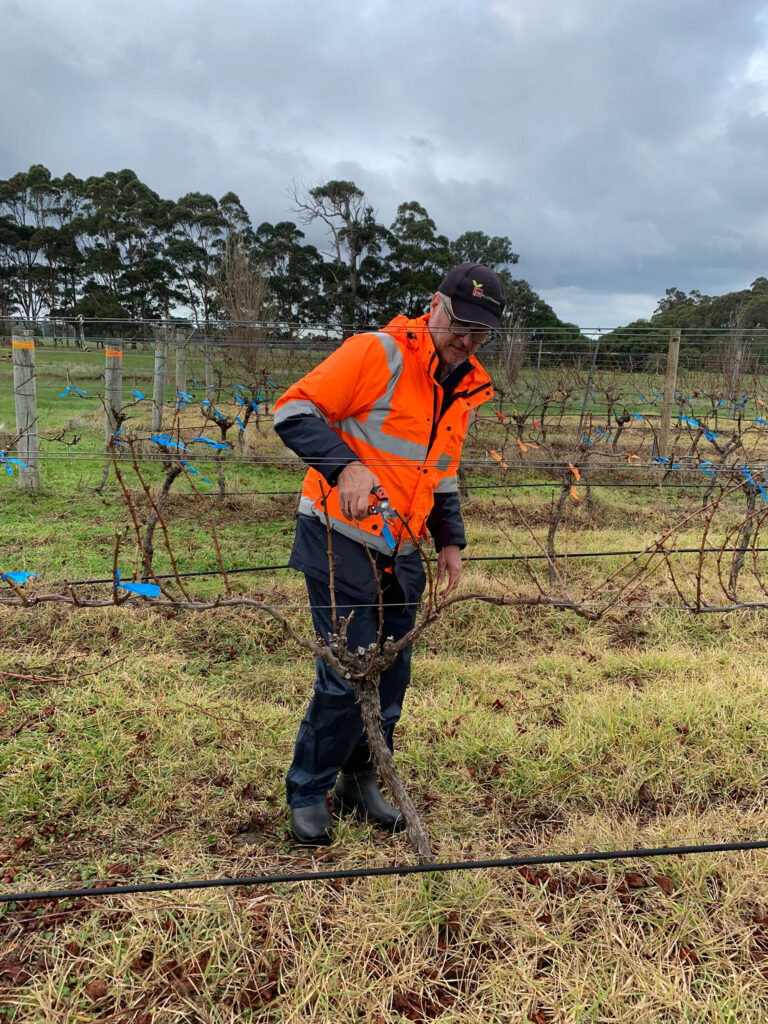Dr Mark Sosnowski, Sub-Program Leader of Horticulture Pathology, at the Department of Primary Industries and Regions research division South Australian Research and Development Institute (SARDI), is Australia’s trunk disease expert.
Dr Sosnowski is leading a new national Wine Australia project with research teams at SARDI and the Gulbali Institute (Charles Sturt University) which are exploring new areas for grapevine trunk disease (GTD) management.
GTDs are a major pressure in Australian vineyards, reducing yield and causing vine decline and death. Spores infect exposed pruning wounds, with vines being most susceptible to infection in the first two weeks after pruning.
The project aims to address knowledge gaps and concerns by:
- Generating new knowledge on spore dispersal and wound susceptibility to GTD pathogens in new climatic regions, in winter and spring;
- Optimising diagnostic capability for GTD and young vine decline (YVD) pathogens;
- Evaluating potential biocontrols for sustainable disease management in the vineyard and nursery;
- Examining source blocks and propagation material for YVD pathogens and thresholds of infection on vine establishment and;
- Clarifying the role of the Cryptovalsa pathogen in Eutypa.
Dr Sosnowski works collaboratively with other researchers in Australia and around the world, to develop strategies for minimising the impact of GTDs, such as applying wound treatments to pruning cuts to prevent infection, and remedial surgery (lopping affected vines at the trunk) to eradicate the pathogen.
Here are his top pruning tips for managing grapevine trunk disease:
- Recent studies suggest that trunk disease can be reduced by minimising pruning wound surface area, by making smaller and less cuts, and by retaining longer stubs when pruning.
- Where possible, avoid pruning during rainfall when airborne spores of GTD pathogens are most prevalent.
- Consider pre-pruning in early to mid-winter and clean up by hand later in the winter when the risk of infection is reduced.
- Contamination of pruning tools is not a major risk of spreading GTD within the vineyard, but always clean pruning tools when moving between blocks and vineyards.
- Protect all wounds by spraying with a registered fungicide within 1 week of pruning, ensuring good coverage. Fungicides will provide up to 2 weeks’ further protection, which should be sufficient to cover the duration of high wound susceptibility. Registered fungicides are Sprayseal (tebuconazole) and Emblem (fluazinam) and can be applied with vineyard sprayers. There are also registered paste products such as Greenseal and Garrison which need to be hand applied and are mainly used for large wounds when reworking.
- Prioritise younger, healthy vines for pruning in dry conditions and apply preventative sprays.
- Remediate infected vines by cutting out all signs of infection from cordons and trunks, allowing a further 10-20 cm buffer where possible. Follow up by painting wounds with paint or a registered wound sealant.
“Our research shows green shoots are susceptible to infection by GTD pathogens, and in the coming years our analysis will focus on evaluating the risks of spring shoot thinning in the vineyard,” Dr Sosnowski said.
“Assessment of hail damaged canes has revealed low levels of trunk disease infection, although much of the infection is removed at pruning.”
For more information, read the Grapevine Trunk Diseases Best Practice Management Guide which can be downloaded from the Wine Australia website.
